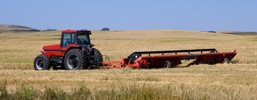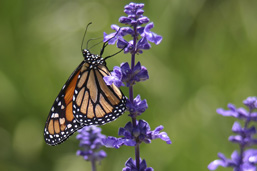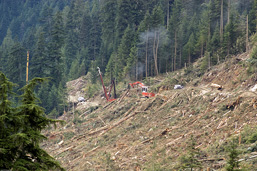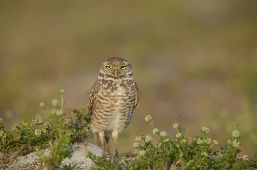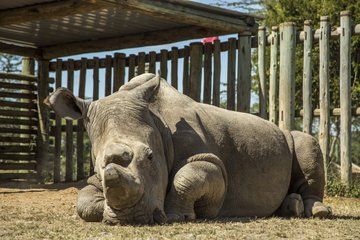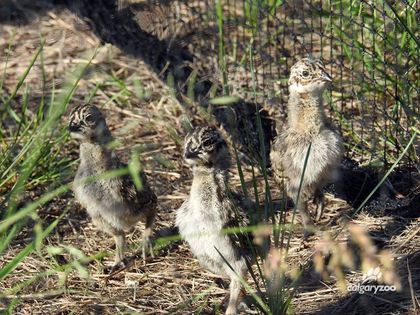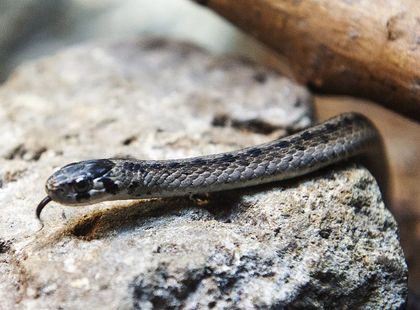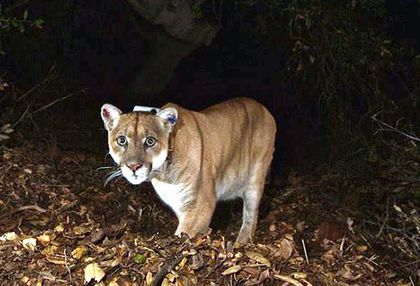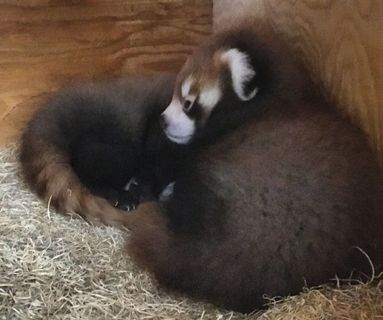Loss of habitat
Land use
Gorillas are losing ground, tigers watch their hunting grounds disappear and elephants are cramped into smaller and smaller patches of wilderness in Africa and Asia. Massive forest cutting, urban expansion and the explosion of agriculture (crops and livestock breeding) shape the landscape and impact the destiny of thousands of living species. In the 5 years from 2000 to 2005, it is estimated that human activity transformed close to 4.3 million hectares of pristine land in South America and some 4 million hectares in Africa. These areas combined almost equal Lake Superior in size. In Australia, approximately two thirds of the original forests have vanished. Globally, man's unquenchable thirst for natural resources is chipping away at the vital space of the planet's other inhabitants.
Alarming disruptions
The math is simple: the more humans on Earth, the greater our needs. We need more places to build houses, more cleared land to grow crops, more space to breed livestock and more roads to transport our products. Result: habitats are fragmented, despoiled and transformed. For many animals, these changes are sudden and enormously disturbing to their conditions of life. Clear cutting, a flood following hydroelectric plant activities or a mining operation have irrevocable consequences for the animal victims of these events, who are left with three choices: adapt, move or disappear. The Red Fox and the Coyote have adapted and benefit from human proximity by scavenging in dumps and stealing from farmyards. Nesting birds migrate to new nesting sites. But not all animals can find their way to more hospitable areas, and undisturbed environments are becoming increasingly rare...
Examples everywhere in the world!
The Siberian Tiger is the largest of the wild cats. The territory of an adult male varies from 500 to 1000 km2; henceforth confined within a few Russian reserves, the big predator has difficulty finding prey, since vast stretches of forest have been sawed down, causing game animals to flee. The Bengal Tiger, for its part, shares its vital space with more than a billion humans in India, with the inevitable human-animal conflict. An absence of sufficient resources in the natural environment has caused bears - black, white and brown - to turn to dumps for their food. Monarch butterflies, which make a spectacular migration between Canada and Mexico, now have problems finding adequate wintering conditions: recent observations show that illegal human activities continue to disrupt close to 56,000 hectares of the Monarch Butterfly Biosphere Reserve. In Indonesia, over 1.8 million hectares of forest – or about 200 hectares an hour! - are burned each year to make way for palm tree plantations (palm oil). At this rate, Indonesia's forests will be gone in 50 years, holding out little hope for the Orang-outang populations on the islands of Borneo and Sumatra.
In Canada
Canada is a vast country known for its wide open spaces and majestic landforms. However, the bulk of the population is concentrated in its southern area, where disruptions from human activity are, accordingly, the most severe. As a result, there is a higher number of endangered species here. One of the most striking examples is found in Western Canada, where the landscape has been radically transformed thanks to the large-scale development of grain crops and oil drilling (oil sands). Many populations of burrowing species, such as the Prairie Dog and Badger, have been hunted down or exterminated. Consequently, the Burrowing Owl, a species that depends on the former two, notably, to supply it with burrows, has lost its habitat and joined the list of endangered species. Elsewhere, the Piping Plover and Spiny Softshell Turtle avoid the sandy beaches they need for laying their eggs: they find it impossible, quite simply, to hold their own in the face of swimmers, all-terrain vehicles and waterfronts. The nesting territories of numerous species of birds were covered by several metres of water following the voluntary flooding of vast areas in northern Quebec.
Because no one has taught them to look both ways before crossing the road, many animals perish on the country's highways. In Quebec, for example, the species most often killed by passing vehicles include the Muskrat, Woodchuck, Snowshoe Hare, Raccoon and Striped Skunk. The fragmentation of the landscape produces modifications in animal behaviour. To reach another part of a territory, a reproductive partner or a food source, they have no choice but to risk their life. Such collisions are also dangerous for drivers, since hitting a deer or a moose may prove fatal.
A look to the future
It's hard enough to live harmoniously under the same roof, not to mention on the same planet! Nevertheless, humans can no longer ignore the obvious: each change they impose, each area they modify, permanently transforms the faith of the species that live in a particular environment. A fine challenge lies in wait for future generations: to respond to the growing needs of the human population in full respect for existing ecosystems.


